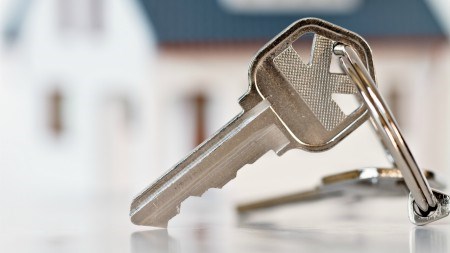Doing your own due diligence on the cosmetics of the home you are intending to buy, will allow you to budget better.
Most home owners will talk about the ‘feeling’ they had when they first walked into the house that they now own. The senses become engaged and provided the house continues to deliver the tick box items as you move from room to room, that feeling intensifies and excites.
Much of the provocation of the senses may be further elevated by the intentional atmospheric enhancements of the show house, eg. the dressing-up such as candle aroma’s, new coat of paint, and so on. So overwhelming can these good energies be, that flaws may be overlooked, or worse not even noticed.
These are not the major flaws that would impact on legalities of buying the house, but rather little items, which in themselves may not appear to be significant, yet cumulatively may max out any after-occupation budgets for minor repairs. Some of these items may, as part of the offer to purchase conditions, be presented to the current owner for repair; the estate agent can advise accordingly. However there are general cosmetic repairs that are usually considered acceptable and which you can undertake yourself over a period of time.
If only for budget purposes, it’s a worthwhile undertaking to do your own due diligence walkabout; an inspection of sorts, and preferably before you put in an offer to purchase. This is not the same as the inspection process that a finance house undertakes on your behalf, and neither do you need any real expertise; just a keen eye for detail.
It is always a good idea to have the estate agent accompany you on such a home inspection, as well as your significant other or good friend, and notes taken, listing any repairs that you believe require attention.
Private Property has compiled a self-inspection pre-purchase list that you may consider using a base, bearing in mind that properties come with their own individual quirks. Also remember, when doing a tour of this nature, you should include all outbuildings.
Walls:
- Interior and exterior wall cracks. If the house has been painted recently, what may appear to be a minor crack, could be hiding a major problem. If you have concerns you may ask the owner to have a structural engineer provide a report.
- Damp issues most often present as a bubbling paint surface. This could be rising damp originating from beneath the house, or from a leaking pipe behind a plastered surface.
- Streaks down walls that may not be noticed at night or on a cloudy day, may be indicative of a roof leak.
- Leaning walls.
Power and electrics:
- Every light switch should work.
- Similarly every plug point should be checked.
- Ovens, inclusive of hotplates, and their internal operations such as temperature control and grill.
- Underfloor heating: this requires asking the home owner to switch it on prior to your inspection so that it reaches ideal temperature.
- Satellite dish; ask the home owner to switch on the TV and prove the satellite dish is operational.
- Pool/jacuzzi/hot-tub/sauna: run the systems, and ensure switch mechanisms are unbroken and performing as they should.
- If a generator is included in the sale, run it and check whether it requires a service or maintenance.
- Motorised gates and garage doors should be opened and closed a number of times; and confirm if there are over-ride systems in place should a power failure occur.
Security:
- Burglar alarm and linked armed response times.
- Internal movement sensors.
- External beams.
- Electric fence.
- Cameras, and/or CCTV.
- Gates should glide easily and/or keys should be available.
- Remote controls should be fully functional.
- Gate motors should be covered, and an operational locking mechanism in place.
- Intercoms and doorbells.
Water:
- Internal and external taps: check for temperature, pressure, and dripping taps.
- Drainage: run a sink/bath and then drain; and check in- and out-door drainage points.
- Flush all toilets.
- Run the shower/s.
- Garden taps and irrigation systems.
- Check beneath toilets, under sinks, behind washing and dishwashing appliances for leaks.
- Examine gutters for rust or damage.
- Borehole examination for leaks and tap opening and closures.
Roof and ceilings:
- Ceiling watermarks indicate a potential leaking roof.
- Drooping ceilings may indicate a serious structural problem.
- If you have access to a drone camera; use it to examine the roof externally for obvious problems.
- Roof paint; check with the current owner when last it was painted.
- Access the roof through interior roof access. You need not inspect it thoroughly but a generic visual may reveal sunlight streaming through holes. If you have concerns you may request a roof inspection.
- Cornices should meet securely against ceilings and walls, and joiners should not have gaps.
Doors and windows:
- All internal and external access doors should open and close, and easily be locked or unlocked, and keys available.
- Door and window frames should be sound, not warped or cracked, particularly wooden frames.
- Door handles.
- Shower and sliding doors should all glide easily.
- Kitchen, bathroom, and bedroom cupboard doors, not forgetting those that are fixed such as linen and bathroom cabinets.
- Window cracks, perishing putty and any window water leaks or under-door water seepage.
Floors:
- Wooden, tiled and concrete floors should not be cracked, unless they are an intentional aesthetic.
- Inspect skirting boards for ant and beetle infestations.
- Check fitted carpets for major stains; lift throw mats to examine beneath.
Other:
- Are air conditioners and their remotes operational?
- Paving: examine the condition.
- Tree’s that are compromising wall security and paving.
- Tiles: both roof and house; are there spare tiles available? This is important should the tiles used have been discontinued by manufacturers.
- Sloping ground angles that may introduce rain/mud into the house.
- Fixed gas braai’s; operational and properly installed?
- Gas stoves; does the installation meet council requirements?
- Animal disturbances in close proximity: dog and birdlife levels – this may include noisy peacocks, roosters, parrots etc.
This list serves purely as a guide. You may find that as you undertake a self-inspection, your eye becomes more tuned to other potential threats or repairs that are not mentioned here.
It must be emphasised that you cannot simply present your (potentially long) list of findings to the seller in the hope that all will be fixed prior to you taking transfer, given that many may be fiddly little things like changing a washer on a tap.
Most importantly this inspection will allow you to work out the type of budget you need to undertake cosmetic repairs and whether they can be undertaken over a period of time, rather than immediately on occupation or transfer.
Finally one piece of advice that is crucially important … obtain from the seller a list of any installers used in the past – such as sliding and security doors, and for items that require regular maintenance; and any warranties (air conditioning units for example) that are still in effect.





